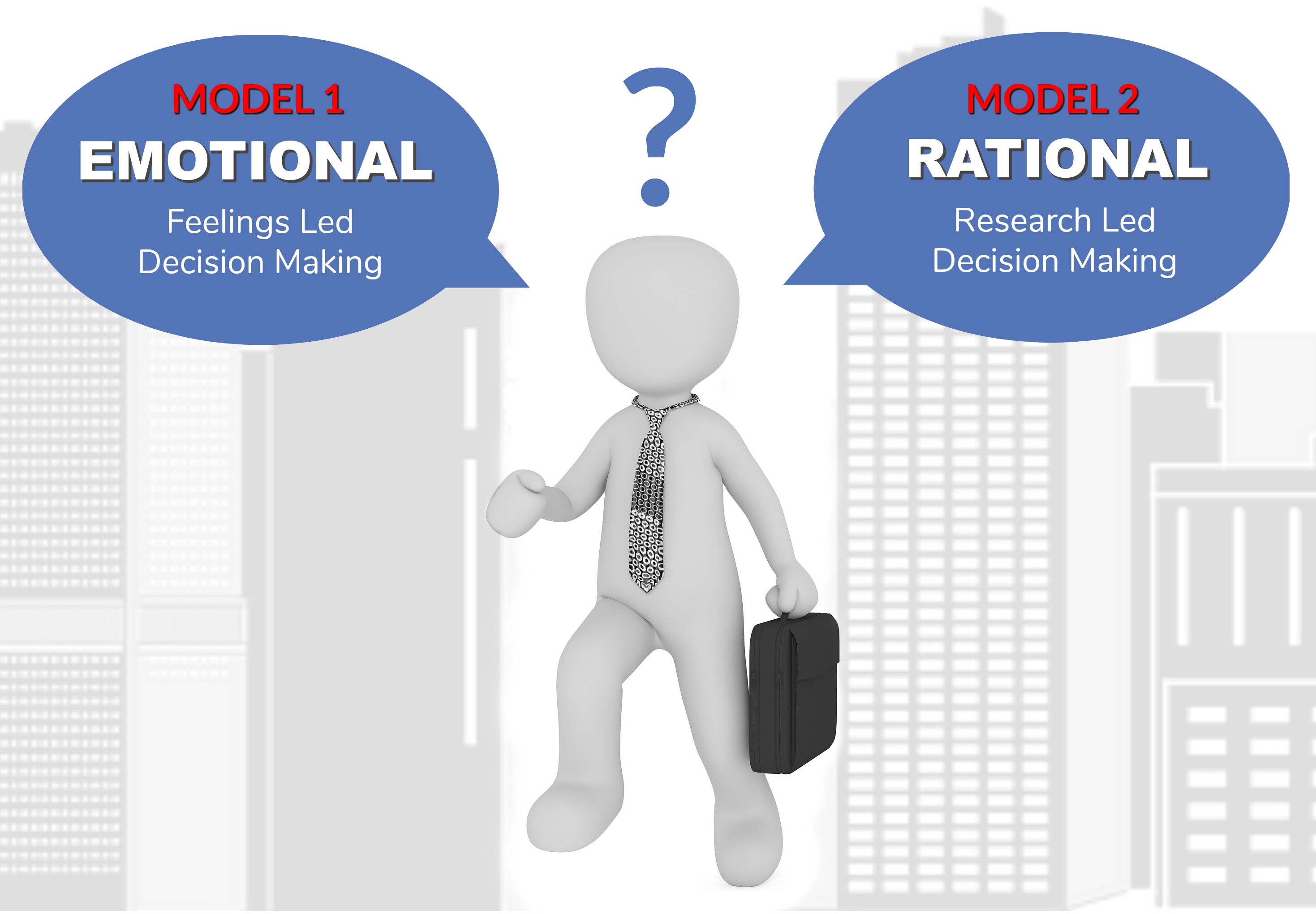Decision Making Models

Decision making is a human activity that we must do repeatedly on a daily basis. It involves identifying a problem, generating alternatives, and choosing the best course of action. Decision making models are tools that individuals can use to make better decisions. There are two main types of decision making models discussed in this article: intuitive and rational. This article will explore the differences between these two types and how they are be applied in different situations.
Intuitive Decision Making Model
Intuitive choice making depends on gut emotions and instincts. It is a rapid selection making method that is used without consciously questioning the process. Intuition is primarily based on previous experiences. It is a intellectual shortcut that humans use to make selections rapidly without considering all the options. Intuitive choice making can be beneficial in conditions where there is not sufficient time to make a properly thought out decision or where there is not enough information available to make an informed decision.
Intuitive choice making is regularly used in conditions where there is a excessive degree of uncertainty or ambiguity. For example, a firefighter who wants to make a rapid decision about how to extinguish a fireplace can depend on instinct to make a speedy decision. Intuitive decision making is additionally used through buyers who want to make rapid selections about shopping for groceries or casual clothes. In each case, people depend on previous experiences and instincts to make a selection quickly.
One of the most important benefits of intuitive decision making is that it is quick and efficient. It lets people make choices quickly without having to consider all of the possible options. This can be beneficial in conditions where time is of the essence or when there is an excessive degree of uncertainty. Another benefit of intuitive choices is that it can be beneficial in conditions when there is not sufficient facts.
However, intuitive selection making additionally has its drawbacks. The major downside of intuitive choice making is that it can be biased. Intuition is based totally on previous experiences, knowledge, and private values. If these previous experiences or private values are biased, then the choice made the use of instinct will additionally be biased. This can lead to bad selections and can have terrible consequences. Another drawback of intuitive selection making is that it can be affected through emotions. Emotions can cloud an individual's judgment and lead to bad choice making.
Rational Decision Making Model
The rational decision making model is a kind of selection making that is primarily based on a systematic and logical process. It entails deciding what the problem is, finding alternative feasible solutions, evaluating the alternatives, and selecting the best path of action. The rational decision making model is based totally on the notion that selections need to be primarily based on data gathered and analysis. It is a much more deliberate and analytical decision making technique than intuitive decision making.
One of the foremost advantages of the rational decision making model is that it is logical and analytical. It permits one to make decisions based primarily on data and analysis. This can lead to higher decision success rates and can minimize the problem of bias. Another benefit of the decision making model is that it can be used to consider complicated and unstructured questions. It affords a structured procedure for evaluating the problem and making a decision.
However, the rational decision making model has its drawbacks. The most important downside of the rational decision making model is that it can be time-consuming and expensive. It requires a lot of resources, which includes time, money, and expertise, to acquire and analyze the required data This can be a full-size barrier to the usage of the rational choice making model, particularly in conditions where time is of the essence. Another downside of the rational decision making model is that it can be inflexible. The structured system may not allow for creativity or outside-the-box thinking, which can restrict the number of options that are considered.
When to Use Intuitive vs Rational Decision Making Models
The selection to use intuitive or rational decision making models relies upon on the unique situation. Intuitive decision making can also be fabulous in conditions when there is a level of uncertainty or where there is not adequate data on hand to make an knowledgeable decision. For example, a health practitioner who wishes to make a rapid selection in an emergency state of affairs may need to be counting on instinct to make a choice quickly. Intuitive choice making might also additionally be excellent in conditions when time is of the essence, such as in firefighting or army operations.
On the other hand, rational selection making can also be best in conditions where there is a degree of complexity. For example, an organization that is identifying whether or not to make investments in a new product line can use the rational decision making model to consider the plausible dangers and advantages of the investment. Rational choice making may be best in conditions when the choice has considerable consequences, such as in healthcare or finance.
It is vital to notice that each intuitive and rational decision making model have their advantages and disadvantages. The key is to use the suitable model for each unique situation. In some cases, it may also be good to use a mixture of each models. For example, a physician may additionally use instinct to make a rapid prognosis in an emergency situation, however then use the rational decision making model to decide the route of treatment.

Conclusion
Decision making models are tools that one can use to make better decisions. The two important kinds of decision making model are intuitive and rational. Intuitive decision making depends on emotions and gut instinct. It is beneficial in conditions where there is a level of uncertainty or when time is of the essence. Rational choice making is based totally on a systematic and logical technique and is beneficial in conditions when the level of complexity is high.
The choice to use intuitive or rational decision making depends upon on the particular situation. Both methods have their benefits and disadvantages, and the key is to use the appropriate method for the precise situation. In some cases, it may also be advisable to use a mixture of both models.
Finally, appreciating the differences between intuitive and rational decision making model can assist people to make better decisions. By using the best decision making model for the particular situation, people can make better decisions that lead to better outcomes.
Decision Making Methods
Decision Making Model In Five Steps - This is the general model for making decisions. Understand how all the pieces fit together. These steps will help you make a quick decision that is logical.
Example of a Decision Matrix - This decision making software shows you how to evaulate an opportunity in light of your strengths and weaknesses.
Sample SWOT Analysis - How to use Strengths, Weaknesses Opportunities and Threats to help in your decision making.
Decision Making
Types Of Decision Making - Find out what the best approach is for making any decision.
Decision Making Accuracy - Discover the factors that affect the accuracy of your decisions.
Economic Decision Making - Make good economic decisions to prosper.
Making Decisions - What are the available ways for making the best decisions?
Quick Decision - Does a quick decision have to be a bad decision?
Decision Data - When you spend the time to get good data, you make good decisions.
Decision Maker - As a decision maker, you want to do your data analysis correctly.
Decision Making - Making a choice.
Paced Decision Making Model - A deliberate method of making a decision.
Classical Decision Making Model - Also called the Rational Decision Making Model
Summary
Good decisions make a business grow. Bad ones will give your business a burn rate. The fuel that burns is your money and your investor's money. When that fuel is gone, your business will fail! You need to use good decision making models.
